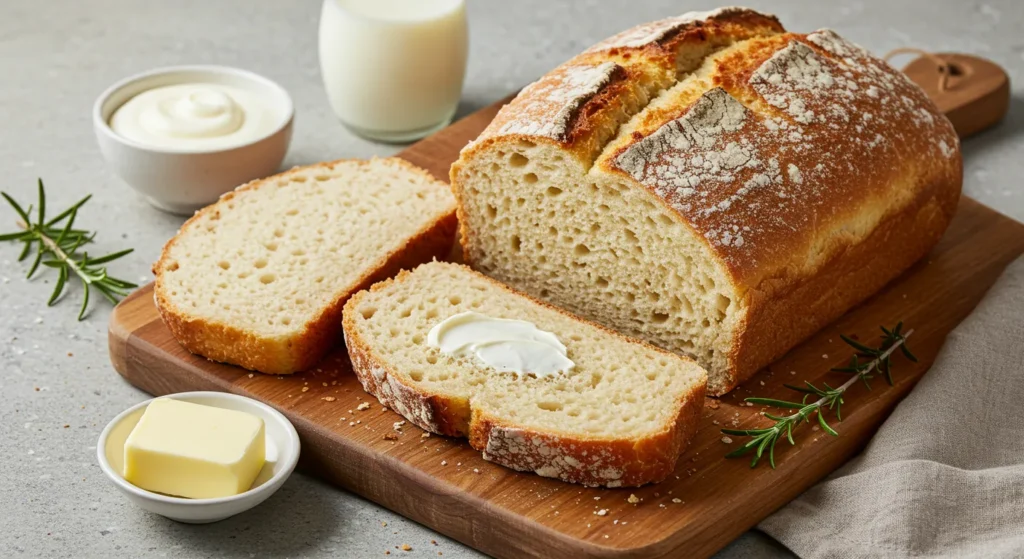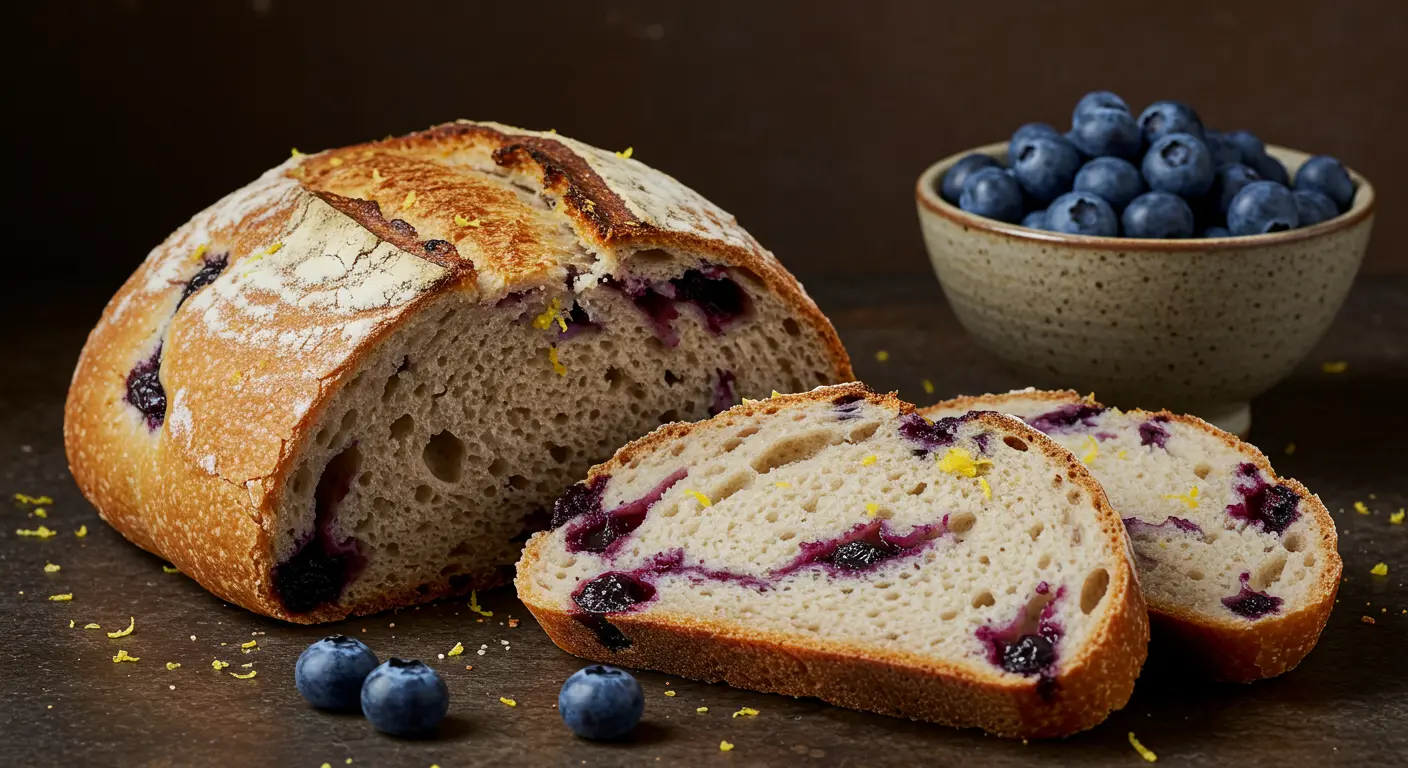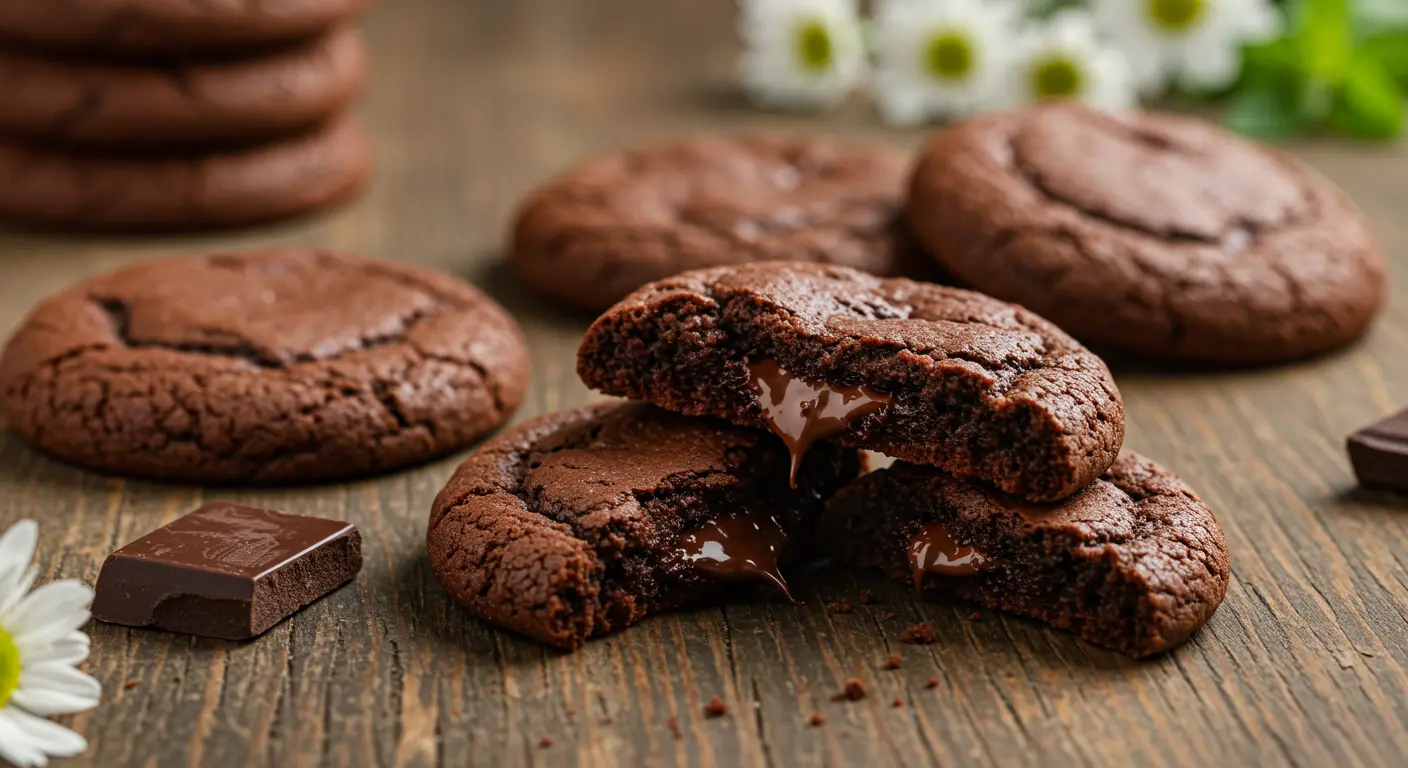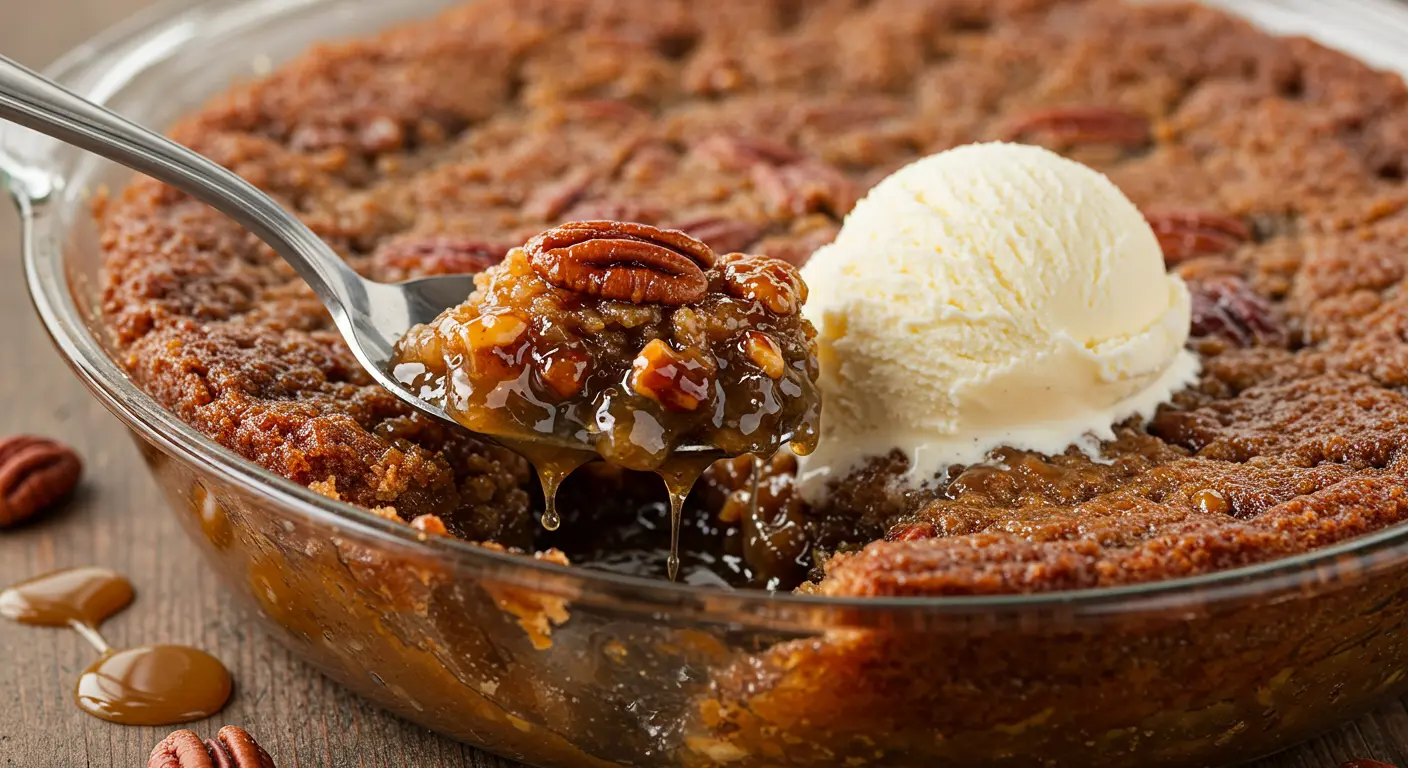Imagine the comforting aroma of freshly baked bread wafting through your kitchen—a loaf so soft, tender, and perfectly golden that it feels like a warm hug. This buttermilk bread recipe is your ticket to creating just that. With its subtle tang from buttermilk in bread and a touch of sweetness, this loaf strikes the perfect balance of flavor and texture.
But what makes this recipe so special? It’s incredibly versatile! Whether you’re crafting the ultimate buttermilk sandwich bread for lunch or indulging in a slice of honey buttermilk bread toasted with butter, this recipe has something for everyone.
Buttermilk has been a beloved ingredient in baking for centuries, cherished for its ability to tenderize dough and add richness. This easy-to-follow recipe simplifies the process, so even beginners can enjoy bakery-quality results at home. By following just five simple steps, you’ll have a loaf that’s not only delicious but also perfect for any occasion.
Are you ready to transform your baking game with this foolproof buttermilk bread recipe? Let’s dive in and get started!
Quick Recipe Card
Prep Time: 15 minutes
Cook Time: 30 minutes
Total Time: 2 hours (including rising time)
Difficulty Level: Easy
Servings: 1 standard loaf
Nutritional Information (per slice):
- Calories: 150
- Protein: 5g
- Fat: 3g
- Carbohydrates: 25g
Equipment Needed
- Mixing bowl
- Measuring cups and spoons
- Whisk
- Loaf pan
- Stand mixer (optional)
- Cooling rack
Ingredients
- 3 ½ cups all-purpose flour
- 1 ¼ cups buttermilk (room temperature)
- 2 tbsp honey
- 1 packet (2 ¼ tsp) active dry yeast
- 1 tsp salt
- 3 tbsp softened butter
Instructions
- Warm the buttermilk slightly until lukewarm (not hot). Mix with yeast and honey; let it sit for 5 minutes.
- Combine flour and salt in a large bowl. Gradually mix in the buttermilk mixture and softened butter.
- Knead the dough for 8 to 10 minutes until it achieves a smooth and elastic texture. Place in a greased bowl, cover, and let rise for 1 hour.
- Shape the dough into a loaf and place it into a greased loaf pan. Let it rise again for 30 minutes.
- Bake at 375°F (190°C) for 30 minutes or until golden brown.
This recipe creates a perfectly tender loaf of buttermilk bread, ideal for buttermilk sandwich bread, toasts, or any meal accompaniment. Want a sweeter twist? Add an extra drizzle of honey to make honey buttermilk bread for a delightful treat.
Ingredient Deep Dive
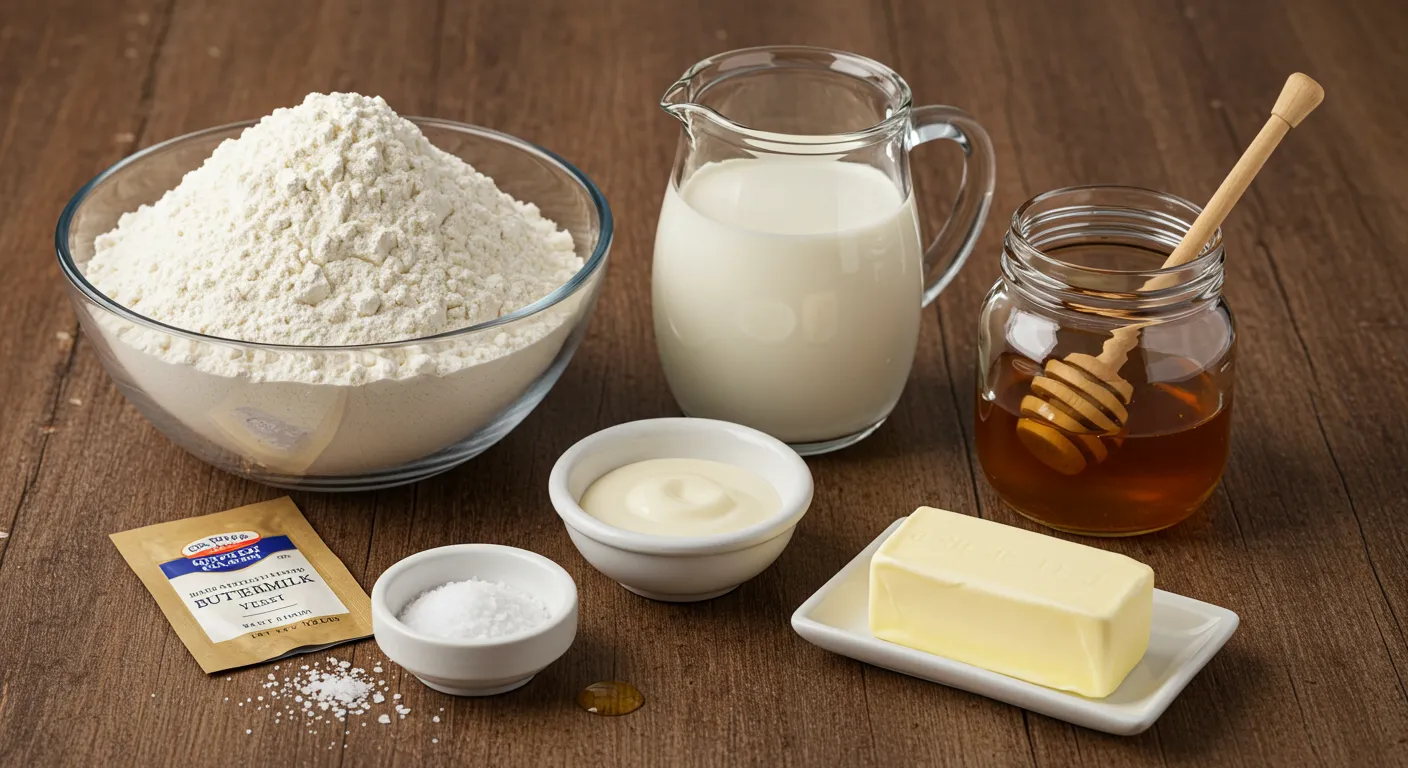
- Buttermilk
Buttermilk is the star ingredient in this recipe, lending the bread its characteristic tenderness and subtle tang. Its acidity reacts with the yeast, creating a soft and airy texture. If you don’t have buttermilk on hand, you can substitute it with a mix of regular milk and lemon juice or vinegar. However, for the best results, use real buttermilk to achieve that authentic flavor. Using buttermilk in bread also helps the crust brown beautifully.
- Honey
A touch of honey not only sweetens the bread but also enhances its moisture. It pairs perfectly with the tanginess of the buttermilk, making it a key ingredient for this recipe. If you’re looking to experiment, try making honey buttermilk bread for a slightly sweeter loaf.
- All-Purpose Flour
All-purpose flour is versatile and perfect for this recipe, giving the bread structure without being overly dense. You can also use bread flour for a chewier texture or mix in whole wheat flour for added nutrition. Keep in mind that adjustments to the liquid measurements may be necessary.
- Butter
Butter enriches the dough, adding a subtle flavor and contributing to the bread’s soft crumb. Make sure it’s softened before incorporating it to ensure even mixing.
- Active Dry Yeast
Yeast is crucial for leavening the bread. Be sure to activate the yeast in lukewarm buttermilk mixed with honey to ensure it’s alive and well. This step guarantees a good rise and a fluffy loaf.
Substitution Options
- Buttermilk: Substitute with 1 cup of milk mixed with 1 tablespoon of lemon juice or vinegar. Let it sit for 5 minutes before using.
- Honey: Replace with maple syrup or agave for a different sweetener profile.
- Flour: Use a mix of all-purpose and whole wheat flour for a hearty loaf.
Storage Tips
Store your buttermilk bread in an airtight container at room temperature for up to 3 days. For longer storage, freeze the loaf in slices to maintain freshness.
Equipment Needed
- Mixing Bowl
A large mixing bowl is essential for combining the ingredients and kneading the dough. If you’re using a stand mixer, the mixing bowl attachment will simplify the process.
- Wooden Spoon or Dough Hook
For mixing and kneading the dough, a sturdy wooden spoon or a dough hook attachment for your stand mixer will work wonders.
- Loaf Pan
A standard 9×5-inch loaf pan is ideal for baking this buttermilk bread recipe. If you plan to make smaller loaves, adjust the pan size accordingly.
- Kitchen Scale
For precise measurements, especially when dealing with flour, a kitchen scale ensures consistency.
- Bench Scraper
A bench scraper makes handling and shaping the dough much easier.
- Clean Kitchen Towel or Plastic Wrap
Covering the dough during proofing is essential to prevent it from drying out.
- Pastry Brush
A pastry brush is handy for applying an egg wash or brushing melted butter on the bread for an added golden crust.
Alternative Options
- Loaf Pan Substitute: Use a baking sheet and shape the dough into a freeform loaf if a pan isn’t available.
- Hand Mixing: If you don’t have a stand mixer, mixing and kneading by hand works just as well, though it may take a bit more effort.
Care and Maintenance Tips
- Wash your loaf pan and mixing bowl with warm, soapy water immediately after use to prevent residue buildup.
- Keep your bench scraper clean and dry to avoid dough sticking to it.
Step-by-Step Instructions: Perfecting Your Buttermilk Bread Recipe
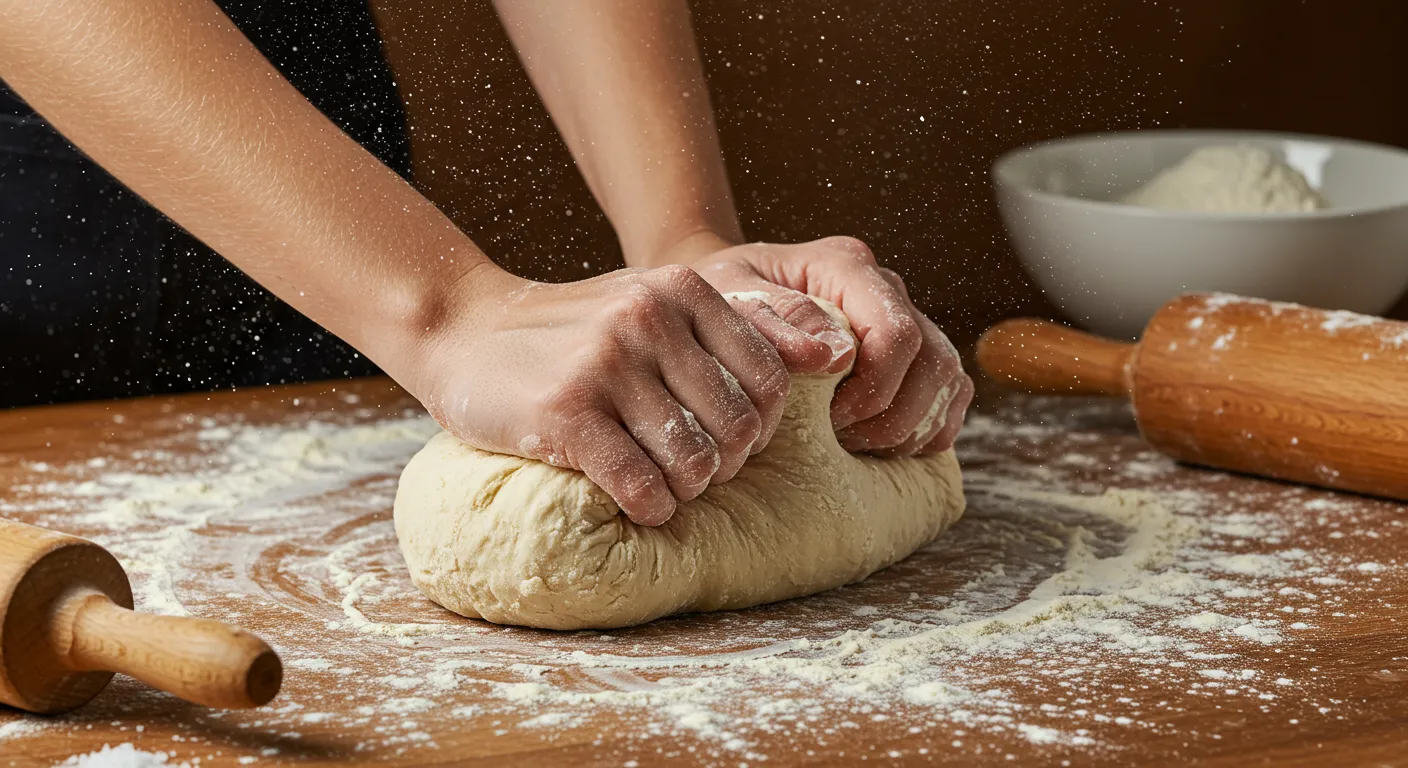
Crafting the ultimate buttermilk bread recipe is a rewarding experience. These clear steps will guide you to success while ensuring you get the fluffiest and tastiest loaf.
Step 1: Prepare the Ingredients
Start by gathering all your ingredients: warm buttermilk, active dry yeast, honey, all-purpose flour, and salt. The buttermilk adds a slight tang, while the honey gives the bread a subtle sweetness, making it perfect for a classic buttermilk sandwich bread.
Tip: Ensure your buttermilk is slightly warm (around 100°F/38°C) to activate the yeast effectively.
Step 2: Activate the Yeast
In a small bowl, combine warm buttermilk and yeast. Let it sit for 5-10 minutes until foamy. This step is crucial for achieving the perfect rise in your buttermilk bread. If the yeast doesn’t foam, your bread won’t rise properly.
Step 3: Mix and Knead the Dough
In a large mixing bowl, mix the yeast mixture, honey, flour, and salt together. Stir until a dough starts to develop. Knead the dough for 8 to 10 minutes until it becomes smooth and elastic. You can do this by hand or use a stand mixer with a dough hook for ease. This step is essential for creating fluffy honey buttermilk bread.
Pro Tip: If the dough feels sticky, add a tablespoon of flour at a time, but avoid over-flouring to keep the bread tender.
Step 4: First Rise
Place the dough in a greased bowl, cover it with a damp cloth, and let it rise for 1-1.5 hours in a warm spot. The dough should double in size. The first rise is crucial for the structure and flavor of this classic buttermilk bread recipe.
Step 5: Shape and Second Rise
Punch down the dough gently to release air. Shape it into a loaf and transfer it to a greased loaf pan. Cover again and let it rise for 30-45 minutes until it reaches the rim of the pan. This step ensures your bread achieves the perfect height, especially for a versatile buttermilk sandwich bread.
Step 6: Bake to Perfection
Preheat your oven to 375°F (190°C). Bake the bread for 30-35 minutes, or until the top is golden brown and the loaf sounds hollow when tapped. For a glossy finish, brush the top with melted butter as soon as it’s out of the oven.
Bonus Tip: For a sweeter variation, sprinkle sugar on top before baking to complement the flavor of your honey buttermilk bread.
Step 7: Cool and Serve
Let the bread cool completely on a wire rack before slicing. Cutting it too soon can ruin the texture. Once cooled, slice and enjoy this delightful buttermilk bread recipe as toast, sandwiches, or paired with butter and jam.
By following these steps, you’ll master the art of baking soft and flavorful bread every time. Whether you’re serving it as a snack or crafting hearty buttermilk sandwich bread, this recipe is sure to impress!
Expert Tips and Tricks for the Perfect Buttermilk Bread
Creating a delicious loaf of buttermilk bread may seem simple, but there are a few tricks you can use to elevate your baking skills and ensure perfect results every time. Here are some expert tips to help you make the best buttermilk bread recipe possible.
1. Use Fresh Buttermilk
Fresh buttermilk is the key to achieving that signature tangy flavor in your buttermilk sandwich bread. If you don’t have buttermilk on hand, you can substitute it by adding a tablespoon of vinegar or lemon juice to a cup of milk. Let it sit for 5-10 minutes to thicken and curdle, mimicking the taste and texture of buttermilk.
2. Temperature Matters
For the best rise, ensure that your buttermilk is slightly warm but not hot. If it’s too hot, it can kill the yeast; too cold, and the yeast won’t activate properly. The ideal temperature range for buttermilk in bread is around 100°F (38°C). This will help the yeast flourish and create a light, airy texture.
3. Let the Dough Rest
Resting the dough during both rises is essential for a light and fluffy loaf. This resting period allows the gluten to develop and the yeast to do its job, resulting in a perfect texture for your honey buttermilk bread.
4. Don’t Skip the Punch Down
After the first rise, always punch down your dough to release the air bubbles. This step ensures your bread is airy but not overly airy and prevents large holes from forming. It also redistributes the yeast, making the final loaf more uniform.
5. Monitor Baking Time Carefully
Keep a close eye on the bread as it bakes. If the top starts to brown too quickly, you can tent the loaf with aluminum foil to prevent it from burning. This is particularly helpful when baking honey buttermilk bread to ensure that the inside remains soft while the outside gets a perfect golden color.
- Brush with Butter
For a shiny, golden finish and extra flavor, brush the top of your buttermilk bread with melted butter right after it comes out of the oven. This small step adds a rich, buttery taste to the crust that will enhance the overall experience.
7. Let It Cool Properly
Patience is key when it comes to buttermilk bread. While it may be tempting to cut into it immediately, let it cool for at least 20-30 minutes before slicing. This allows the crumb to set and improves the texture, making it easier to cut.
8. Make Extra for Sandwiches
This buttermilk sandwich bread is perfect for making delicious sandwiches. Slice it thinly for a soft, yet sturdy foundation for your favorite fillings. From turkey to veggie sandwiches, it will elevate your lunch game. Plus, you can freeze extra slices to enjoy later.
By following these expert tips, you’ll ensure that your buttermilk bread recipe turns out perfectly every time, whether you’re making it for a family meal, a special occasion, or a simple snack.
Variations and Customizations for Buttermilk Bread
While the buttermilk bread recipe is delightful on its own, it offers a wonderful base for a variety of creative twists. Whether you’re looking to change up the flavor, accommodate dietary preferences, or add some fun mix-ins, there are plenty of ways to customize your buttermilk sandwich bread to suit your tastes. Here are a few ideas to help you personalize your loaf:
1. Add Herbs and Spices
Elevate the flavor of your honey buttermilk bread by incorporating herbs and spices. Try adding a teaspoon of dried rosemary, thyme, or sage to the dough for a savory twist. A pinch of cinnamon or nutmeg would also work wonderfully, especially in the colder months when you’re craving something cozy.
2. Incorporate Whole Grains
For a heartier version of buttermilk bread, try substituting some of the all-purpose flour with whole wheat flour or spelt flour. This will add more fiber and a nutty flavor to your bread. If you’d like, you can start by replacing 25% of the all-purpose flour with whole wheat flour and adjust from there based on your preference.
3. Sweeten It with Dried Fruits
If you’re a fan of slightly sweeter bread, consider adding dried fruits like raisins, cranberries, or even chopped dried apricots. The buttermilk bread will have a pleasant sweetness, perfect for breakfast or a light afternoon snack. Dried fruit pairs wonderfully with the buttermilk in bread for a soft, rich texture.
4. Use a Variety of Nuts
Chopped walnuts, pecans, or almonds would add a satisfying crunch to your loaf of buttermilk sandwich bread. These nuts will contribute extra flavor and texture, making it a more filling and satisfying option. If you’re a fan of a bit of crunch, this variation is for you!
5. Chocolate Chip Buttermilk Bread
For those with a sweet tooth, try adding a handful of chocolate chips to your dough. This will create a subtle sweetness throughout the buttermilk bread, especially when paired with the slight tanginess of buttermilk. It’s like combining your favorite honey buttermilk bread with the delightful experience of a chocolate chip treat!
6. Make It Gluten-Free
If you’re following a gluten-free diet, you can make a gluten-free version of your buttermilk bread recipe by substituting the all-purpose flour with a gluten-free flour blend. Be sure to use a blend that contains xanthan gum or guar gum, as these help provide structure and elasticity to the dough. You may also need to adjust the amount of liquid to ensure the dough comes together properly.
7. Try a Sweet Glaze
If you’re in the mood for an extra indulgent loaf, drizzle a sweet glaze on top of your honey buttermilk bread. Mix powdered sugar with a bit of milk or buttermilk and a dash of vanilla extract to create a silky glaze. Pour it over the loaf once it’s cooled for a sweet finish that will add extra sweetness and shine to the loaf.
8. Make Mini Loafs or Rolls
For a different presentation, divide your dough into smaller portions and bake them as mini loaves or rolls. This works great for a dinner party or family gathering where guests can enjoy individual portions of buttermilk sandwich bread. The mini loaves will bake faster, so be sure to check for doneness around 20-25 minutes.
With these variations, your buttermilk bread recipe becomes even more versatile, whether you’re looking for something savory, sweet, or gluten-free. Feel free to experiment and add your own spin to make the perfect loaf that suits your taste and needs.
Serving and Presentation Ideas for Buttermilk Bread
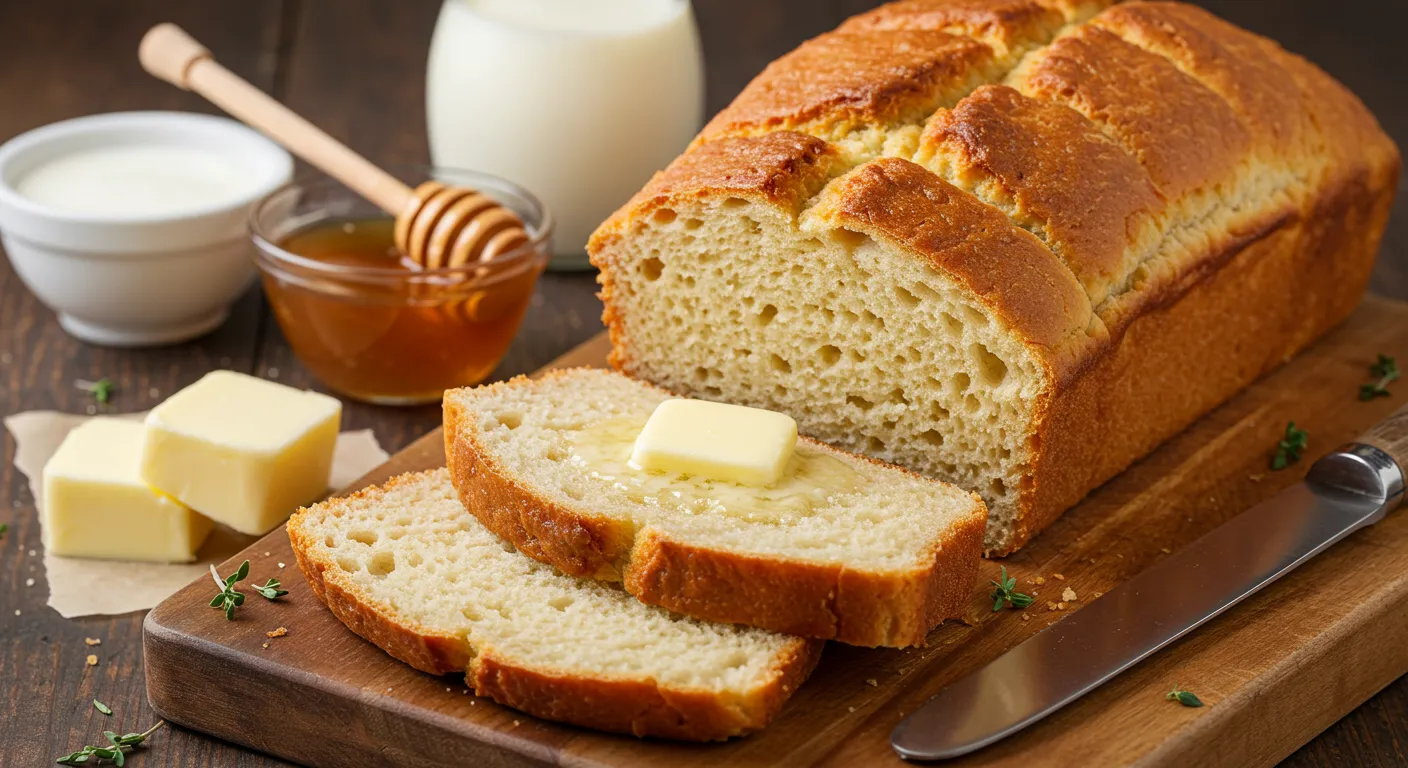
When it comes to serving your homemade buttermilk bread, presentation can elevate the entire experience. Whether you’re sharing a warm loaf at a family dinner or preparing it for a special occasion, there are many creative ways to present your buttermilk sandwich bread to make it even more irresistible. Here are some ideas for serving and showcasing your honey buttermilk bread:
1. Serve with Butters and Spreads
Nothing complements a fresh loaf of buttermilk bread quite like a delicious spread. Serve slices with softened butter for a simple, yet satisfying treat. For something a bit more special, try flavored butters like honey butter, cinnamon butter, or herb-infused butter. The rich flavor of buttermilk sandwich bread pairs perfectly with these spreads, making each bite a delight.
2. Create a Classic Sandwich
The texture of buttermilk sandwich bread makes it the perfect choice for sandwiches. Whether you’re making a classic peanut butter and jelly, a grilled cheese, or even a turkey and avocado sandwich, this soft bread creates the ideal foundation for any filling. The slight tang from the buttermilk in bread adds an extra layer of flavor that will make your sandwiches stand out.
3. Serve with Soups and Stews
For a comforting meal, serve slices of buttermilk bread alongside your favorite soup or stew. The soft, fluffy texture is perfect for dipping into creamy soups like tomato bisque or hearty stews. A warm loaf of honey buttermilk bread will also complement the rich flavors of a bowl of chili or a vegetable soup.
4. Toast for Breakfast
If you want to turn your buttermilk bread into a breakfast treat, try toasting a few slices and topping them with your favorite toppings. Butter, jam, or marmalade will pair wonderfully with the slightly sweet flavor of buttermilk sandwich bread. For a more decadent option, top your toast with fresh fruit, a drizzle of honey, or a dollop of whipped cream.
5. Mini Loafs as Gifts
If you’re looking for a thoughtful and personalized gift, consider baking smaller loaves of buttermilk bread and wrapping them up with a beautiful ribbon. These mini loaves can be customized with flavors like cinnamon or nutmeg, making them an even more special gift. The recipient will appreciate the effort you put into baking, and they’ll enjoy the delightful taste of homemade honey buttermilk bread.
6. Grilled Cheese Delight
For a comforting and indulgent treat, use your buttermilk sandwich bread to make grilled cheese sandwiches. The buttery, crispy exterior of the bread combined with melted cheese makes for an irresistible bite. You can add extras like tomatoes, bacon, or avocado to make it even more flavorful and filling. Buttermilk bread makes the perfect vessel for grilled cheese due to its soft and sturdy structure.
7. Serve with a Sweet Drizzle
For a sweet touch, drizzle a simple glaze made from powdered sugar and buttermilk over a loaf of honey buttermilk bread. This adds a bit of sweetness without being overwhelming, making it a delightful treat for breakfast or an afternoon snack. The glaze will also add a glossy finish to your bread, making it look as great as it tastes.
8. Pair with Cheese and Charcuterie
For an elegant serving option, slice your buttermilk bread and pair it with a variety of cheeses, cured meats, and fruits. This makes for a perfect appetizer or snack during a gathering or as part of a charcuterie board. The slight tang from the buttermilk in bread complements the richness of cheese and the savory flavors of cured meats. Add some fresh grapes or figs for a beautiful balance of flavors.
No matter how you choose to serve it, buttermilk bread is sure to be a crowd-pleaser. Whether you go for the classic sandwich, enjoy it with a comforting soup, or serve it as a gift, the versatility and rich flavor of this homemade bread will make every occasion feel a little more special.
Conclusion
With this buttermilk bread recipe, you can easily create a delicious, soft, and flavorful loaf that will elevate any meal. Whether you’re making buttermilk sandwich bread for a hearty sandwich, baking a batch of honey buttermilk bread for a sweet treat, or experimenting with your favorite variations, this recipe provides a foolproof way to get perfect results every time. The addition of buttermilk in bread brings a delightful softness and subtle tang that will make your bread stand out.
So, gather your ingredients, follow these simple steps, and enjoy the irresistible warmth and comfort of freshly baked buttermilk bread right from your own kitchen. Whether it’s for a cozy family dinner or a special occasion, this bread will quickly become a favorite in your baking repertoire. Happy baking!
FAQ Section: Common Questions About Buttermilk Bread
1. Can I use buttermilk powder instead of liquid buttermilk?
Yes, you can substitute buttermilk powder for liquid buttermilk in the buttermilk bread recipe. To do so, mix 1/4 cup of buttermilk powder with 1/4 cup of water for every 1/4 cup of liquid buttermilk required in the recipe. Just ensure you adjust the overall liquid content of the recipe to maintain the right consistency of the dough.
2. Can I make buttermilk bread without a stand mixer?
Yes, you can absolutely make buttermilk bread by hand. Simply combine the ingredients in a large bowl, then knead the dough for about 8–10 minutes until it is smooth and elastic. You can also use a hand mixer with a dough hook if you don’t have a stand mixer. Just make sure to knead the dough thoroughly to develop the gluten for the perfect texture.
3. How do I know when buttermilk sandwich bread is fully baked?
To check if your buttermilk sandwich bread is done, tap the bottom of the loaf after removing it from the pan. If it sounds hollow, it’s ready. Alternatively, you can use a kitchen thermometer to check the internal temperature; it should be around 190°F (88°C). If the bread feels soft but not underbaked, it’s perfectly cooked.
4. How should I store honey buttermilk bread?
Store your honey buttermilk bread in an airtight container or a resealable plastic bag at room temperature for up to 3–4 days. If you want to keep it fresh for longer, you can wrap the bread in plastic wrap and store it in the freezer for up to 3 months. Just make sure to slice it before freezing for easy portioning.
5. Can I use this recipe to make buttermilk bread rolls or buns?
Yes, you can easily convert this buttermilk bread recipe into rolls or buns. After the first rise, divide the dough into equal portions and shape them into individual rolls. Place them on a baking sheet, making sure they are close enough to touch each other. Allow them to rise again, then bake as you would the loaf, but keep an eye on them as they may cook a little faster. Enjoy the soft, fluffy rolls as a perfect addition to any meal!
6. Can I add other flavors to my buttermilk bread?
Absolutely! Buttermilk bread is incredibly versatile, and you can add different ingredients to give it a personalized flavor. Try incorporating herbs like rosemary, thyme, or garlic for a savory twist. For a slightly sweeter version, you can add cinnamon, nutmeg, or dried fruit such as raisins. You can even experiment with honey buttermilk bread by adding chocolate chips or nuts for an extra touch of sweetness and crunch.
7. Why does buttermilk in bread make it so soft?
The acidity in buttermilk in bread reacts with the flour and the baking soda or baking powder, creating a soft and tender crumb. This reaction helps to break down the proteins in the flour, leading to a more delicate texture. The fat content in buttermilk also contributes to the moistness of the bread, making it soft and flavorful. Whether you’re making buttermilk sandwich bread or a rich honey buttermilk bread, this ingredient plays a key role in ensuring a soft and delicious loaf every time.
By addressing these common questions, you can confidently prepare your buttermilk bread with even more insight into the recipe. Whether you’re a beginner or an experienced baker, these tips will help you create the perfect loaf every time!

